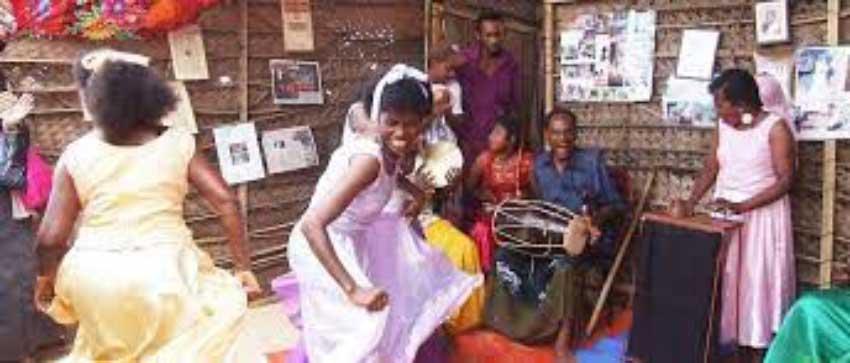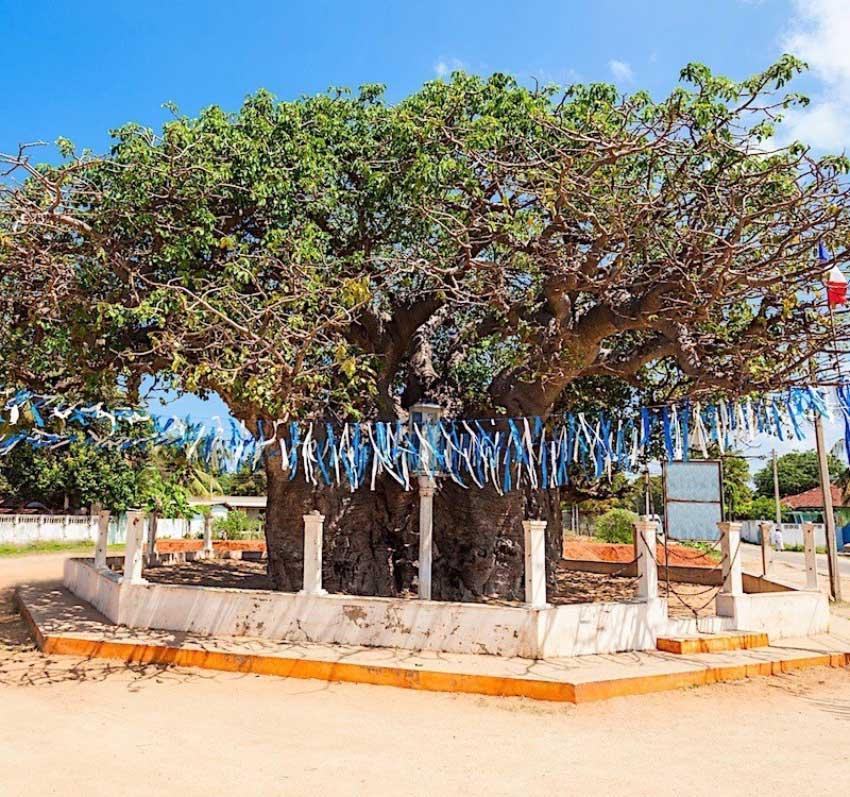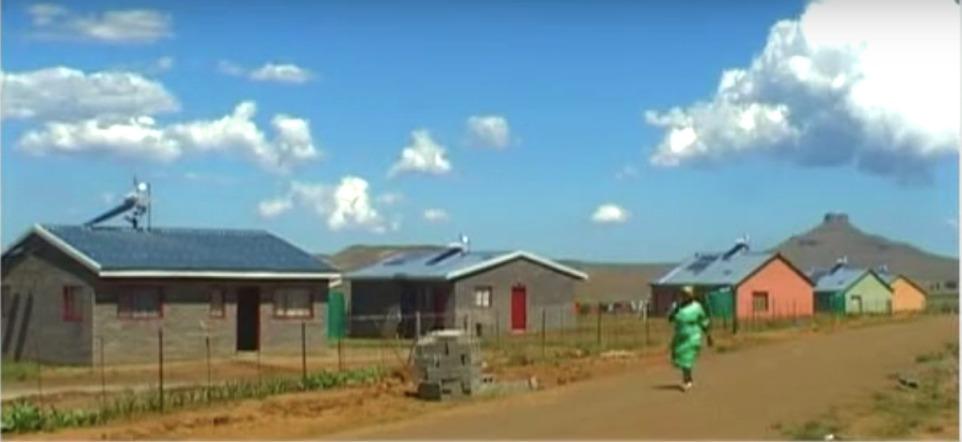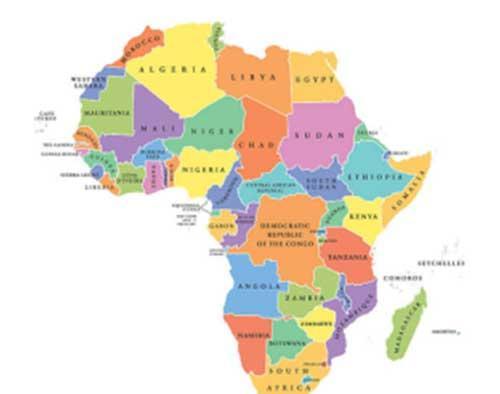22 May 2021 - {{hitsCtrl.values.hits}}

Afro-Sri Lankans dancing the manja
 Statements on strengthening Sri Lanka’s relations with Africa are often diplomatic niceties or knee-jerk reactions to the challenges of UNHRC resolutions. The perception that African countries are like-minded and thereby a sympathetic forum to boost ‘the against’ vote at the UNHRC underlies the latter. The former seems to acknowledge the significance of Africa but let priorities of perceived commercial realism replace or dilute it on our global relations agenda. This article, penned to coincide with Africa Day (25th. May), seeks to underline that Sri Lanka has its own story of a journey with this continent and has much to benefit from travelling further.
Statements on strengthening Sri Lanka’s relations with Africa are often diplomatic niceties or knee-jerk reactions to the challenges of UNHRC resolutions. The perception that African countries are like-minded and thereby a sympathetic forum to boost ‘the against’ vote at the UNHRC underlies the latter. The former seems to acknowledge the significance of Africa but let priorities of perceived commercial realism replace or dilute it on our global relations agenda. This article, penned to coincide with Africa Day (25th. May), seeks to underline that Sri Lanka has its own story of a journey with this continent and has much to benefit from travelling further.
An inspiring start to our journey is that declaration near the entrance of the Apartheid Museum in Johannesburg which reads:
“Humanity was born in Africa. All people, ultimately, are African.”
Fast forwarding many millennia of societal evolution to the 6th Century AD, we find the Greek writer Cosmas noting in his Topographia Christiana strong trading links between Sri Lanka and the Ethiopian empire. Another leap of time and more enduring African links are found in about 40 non-indigenous African baobab trees found mainly around Mannar. An estimate done in 2003 placing one baobab at over 723 years shows that some even pre-date Sri Lanka’s colonial period.
The colonial period intensified African links and the best example is our small but notable Afro-Sri Lankan community. This community, now less than a 1000 people is mainly found in Puttalam. With historical references to African arrivals in the Portuguese, Dutch and British period, the linkages of the present Puttalam community are believed to be from the British period when slaves were bought from the Portuguese colony of Goa. They were then freed and drafted into the Caffre Corps Regiments of the Ceylon National Infantry.
Whilst small in number, like the Afro-Americans who have contributed through generations to spirituals, gospel music and jazz; the Afro-Sri Lankans have played a formative role in modern Sri Lankan baila. Their manja music has links with the kaffirinha. Musicians such as Wally Bastianz later brought this into the Sri Lankan mainstream by adapting the 6/8 kaffirinha rhythms to accommodate Sinhala lyrics. The community cherish their manja songs and audiences at their performances are left in no doubt of their impact on the rhythms and dance styles of Sri Lankan baila.

Baobab Tree Mannar
There are two monuments of interest on our ‘journey’. One is the grave in Mauritius of Ehelapola Nilame who died there during his banishment by the British in 1829. He is fairly well known of in Mauritius and I was surprised to find a passerby offering clear directions to this monument. The other is a 1918 monument erected by the Government of South Africa in Diyatalawa to the Boer prisoners of war who died there during imprisonment. One Boer prisoner attracts our special interest. This is Henry Engelbrecht. He refused to swear allegiance to the British crown when the war ended therefore unlike most could not be sent back to South Africa. He remained to become the first warden of the Yala Safari park, a position he held for 21 years in which time he did much to improve the park.
Just as Engelbrecht made his mark in Sri Lanka, the impact of this Boer prisoner interaction has transcended our boundaries. Situated in the centrally located South African Free State and often used to showcase South African Government intervention in agriculture is a village called Diyatalawa. Despite origins in colonial cross-currents not a bad testimony to Sri Lanka’s global reach!

Diyatalawa South Africa
Sri Lankan professionalism also supports our reach. While a perception prevails in some countries of Sri Lanka being a supply source for migrant labour, domestic assistance as well as illegal entrants, this is less so in Africa. Apart from doctors, lawyers and engineers, several Sri Lankan accountants have attained head or senior partner grades in Africa based international accountancy firms, and finance director levels in international mining companies. Sri Lankan appointments have been made to Government agencies, linked institutions and the judiciary. Names that come to mind include Uttum Corea who was Director General in the National Strategy office of the President of Botswana and Hiran Mendis who invigorated the Botswana stock exchange as its CEO. Similarly in Seychelles Justice Andrew Ranjan Perera was appointed Chief Justice in 2008, and Justices Francis Fernando and Mohan Buran hold positions in the equivalent of our supreme and appeal court respectively. The Auditor General of Seychelles Gamini Herath is also Sri Lankan.
The regard for Sri Lankan professionalism burrows deep extending to teachers who have taught in many African countries. The former President of Seychelles James Michel, a former teacher himself, speaks with great respect of Sri Lankan teachers. Similarly at a recent meeting the Zambian Treasury Secretary conveyed conversationally that his English Teacher was from Sri Lanka. With the older generation of our teachers quality of English is often highlighted as a particular strength.
This well connected expat community can assist business interactions and enhance inter-governmental links. The journey of Governmental links goes back to Afro- Asian interactions in the 1955 Bandung conference and the subsequent Non-Aligned Nations Movement (NAM). Contextually Sri Lanka’s chairpersonship of the1976 Colombo NAM conference witnessed a delegation headed by the Secretary General of the ANC Alfred Nzo attend as observers and a commitment to the elimination of apartheid. Sri Lanka can further develop multilateral links as a member of the Indian Ocean Rim Association and as an observer at the African Union.
 Businesswise, the recent Sri Lankan Airlines direct connection to Nairobi is beneficial. It will support business relations beyond Kenya with the pan-African flight connectivity of Kenyan Airlines. Also supporting business diplomacy are 6 Sri Lankan diplomatic missions believed task sufficient based on trade and investment priorities in Europe and Asia. While resource constraints suggests this limited number is understandable, it would be unfortunate if wider resident mission connectivity in Africa is perceived better left to the big guns in the global arena.
Businesswise, the recent Sri Lankan Airlines direct connection to Nairobi is beneficial. It will support business relations beyond Kenya with the pan-African flight connectivity of Kenyan Airlines. Also supporting business diplomacy are 6 Sri Lankan diplomatic missions believed task sufficient based on trade and investment priorities in Europe and Asia. While resource constraints suggests this limited number is understandable, it would be unfortunate if wider resident mission connectivity in Africa is perceived better left to the big guns in the global arena.
Pre-pandemic many of the world fastest growing economies were in Africa and leaving aside our giant neighbour, Pakistan’s 15 African missions will be soon become 21 to boost trade. Similarly a medium range power such as Turkey has increased its 12 diplomatic missions in 2012 to 43 in 2019 with business linkages stated as a priority. Our policy makers should also be aware that there is big business in Africa and while limited amounts have come in as investment, in 2011 an African company made considerable progress on an USD 800 million investment into Sri Lanka’s hospitality sector. This was unable to proceed due to difficulties with national gaming legislation. A few Sri Lankan companies have grasped opportunities in Africa. Apart from tea exporters, companies that come to mind include Neil Marine, Hela Clothing and the rapid African expansion planned by LOLC’s micro finance operation. Sri Lankan mini hydro companies have set up projects and the African Continental Free Trade Area could benefit our manufacturing outward investors. Africa is a market to be studied carefully and entered cautiously, but given a total population of 1.3 billion and a combined GDP of over USD 2.6 trillion, for our foreign policy makers and businessman who worry about impact with the presence of international big players; some words of encouragement from an African proverb:
“If you think you are too small to make a difference, you haven’t spent a night with a mosquito.”
The writer is a former High Commissioner to South Africa and works with a company supporting international health and infrastructure projects in Africa
26 Nov 2024 26 Nov 2024
26 Nov 2024 26 Nov 2024
26 Nov 2024 26 Nov 2024
26 Nov 2024 26 Nov 2024
26 Nov 2024 26 Nov 2024